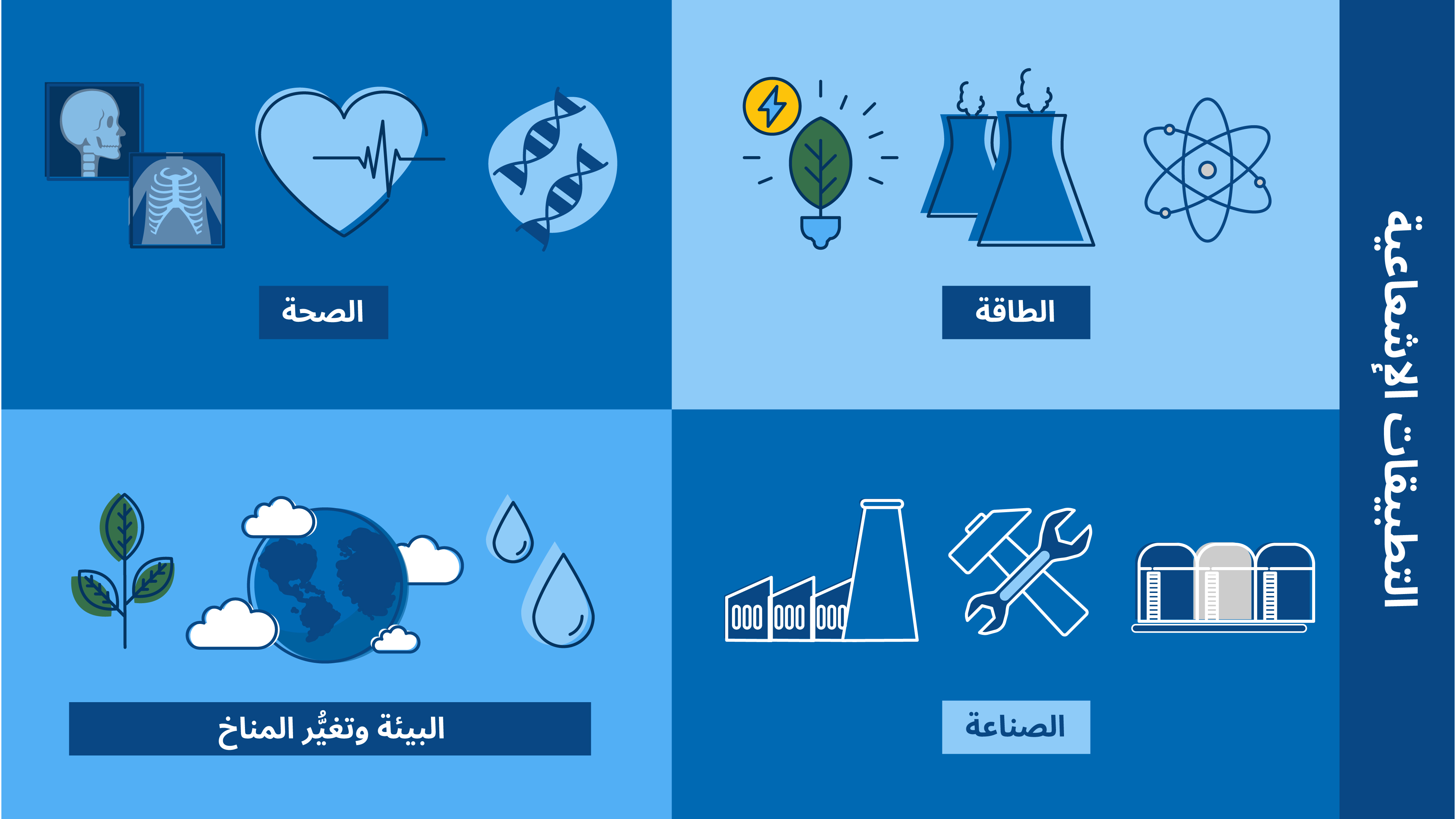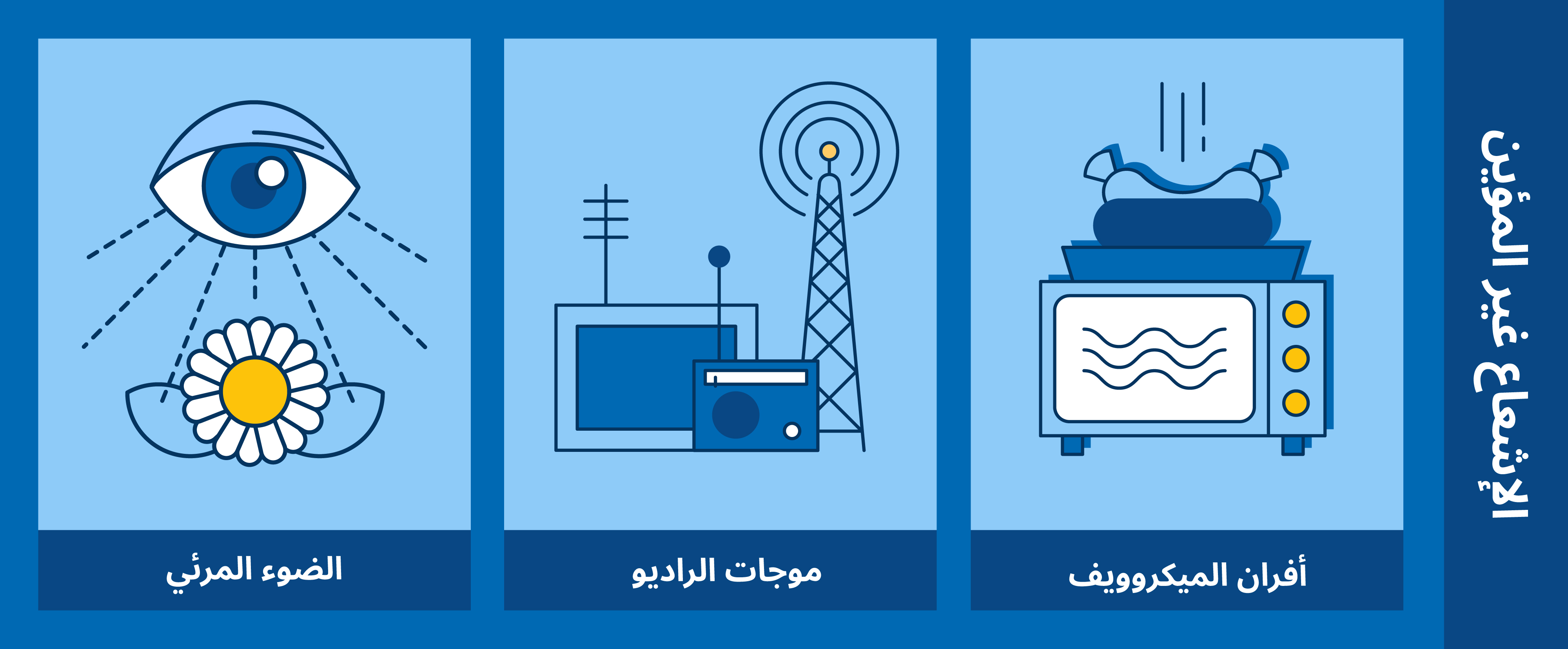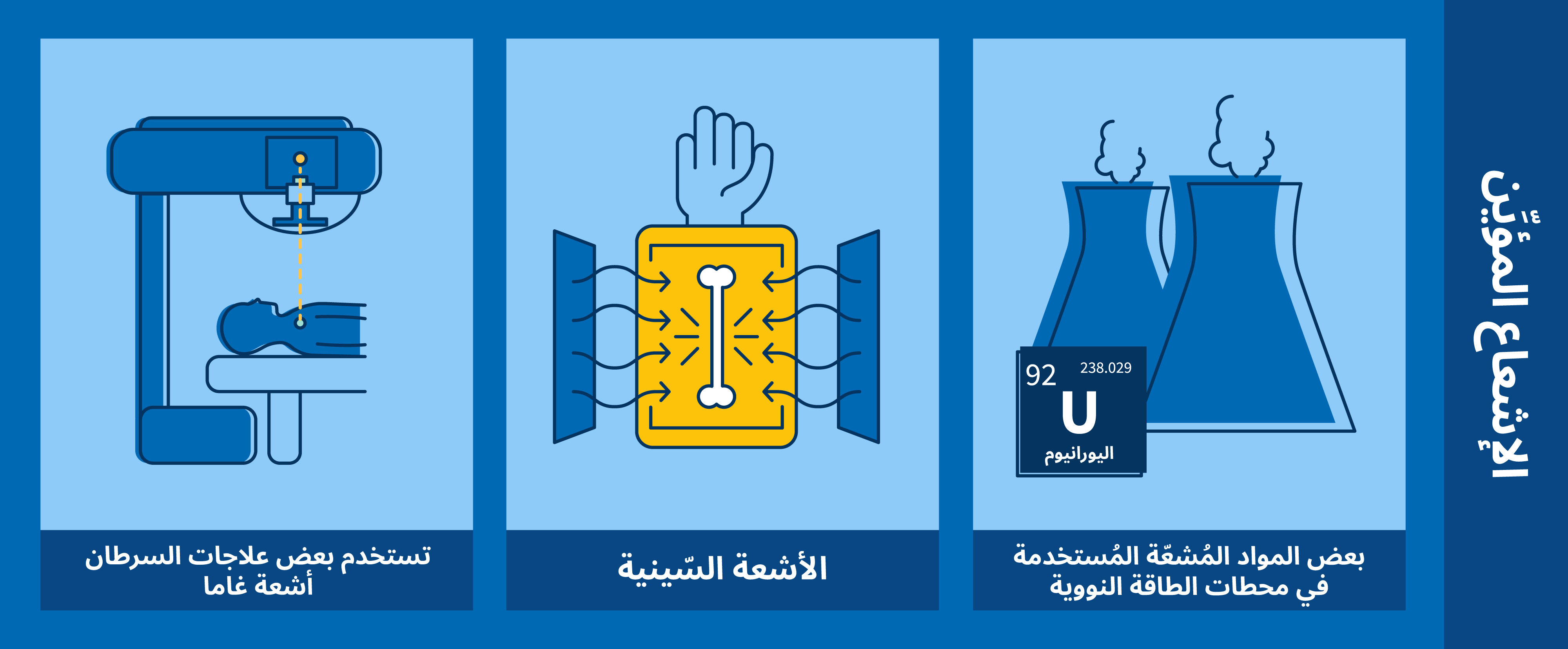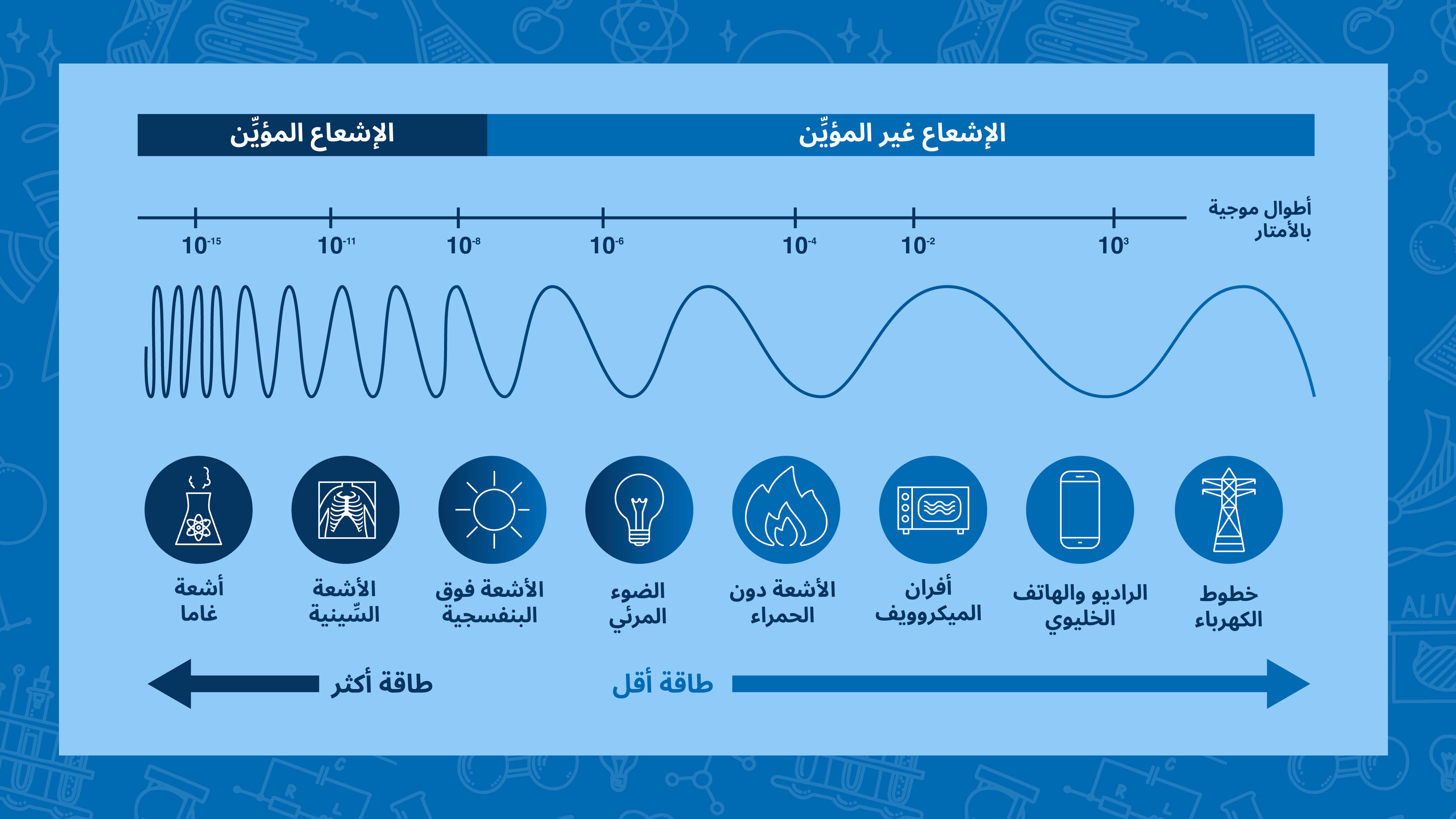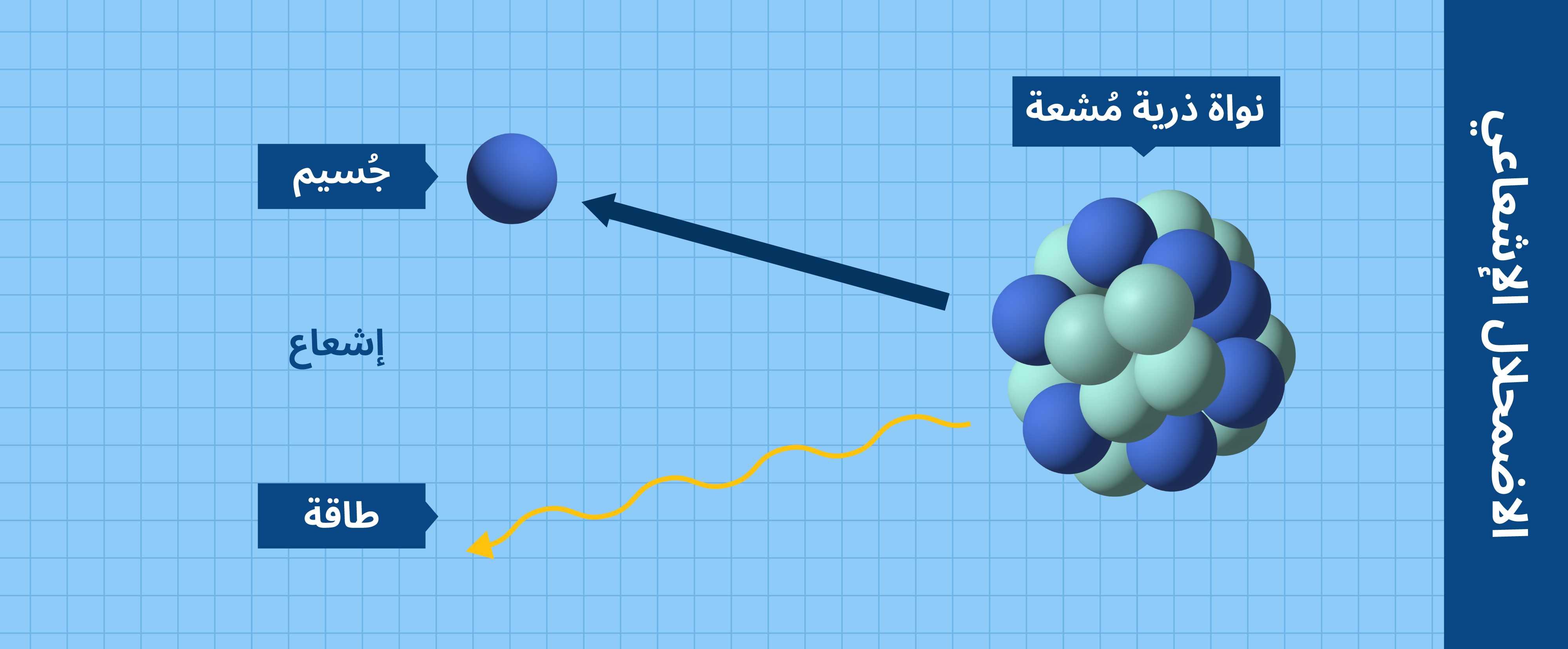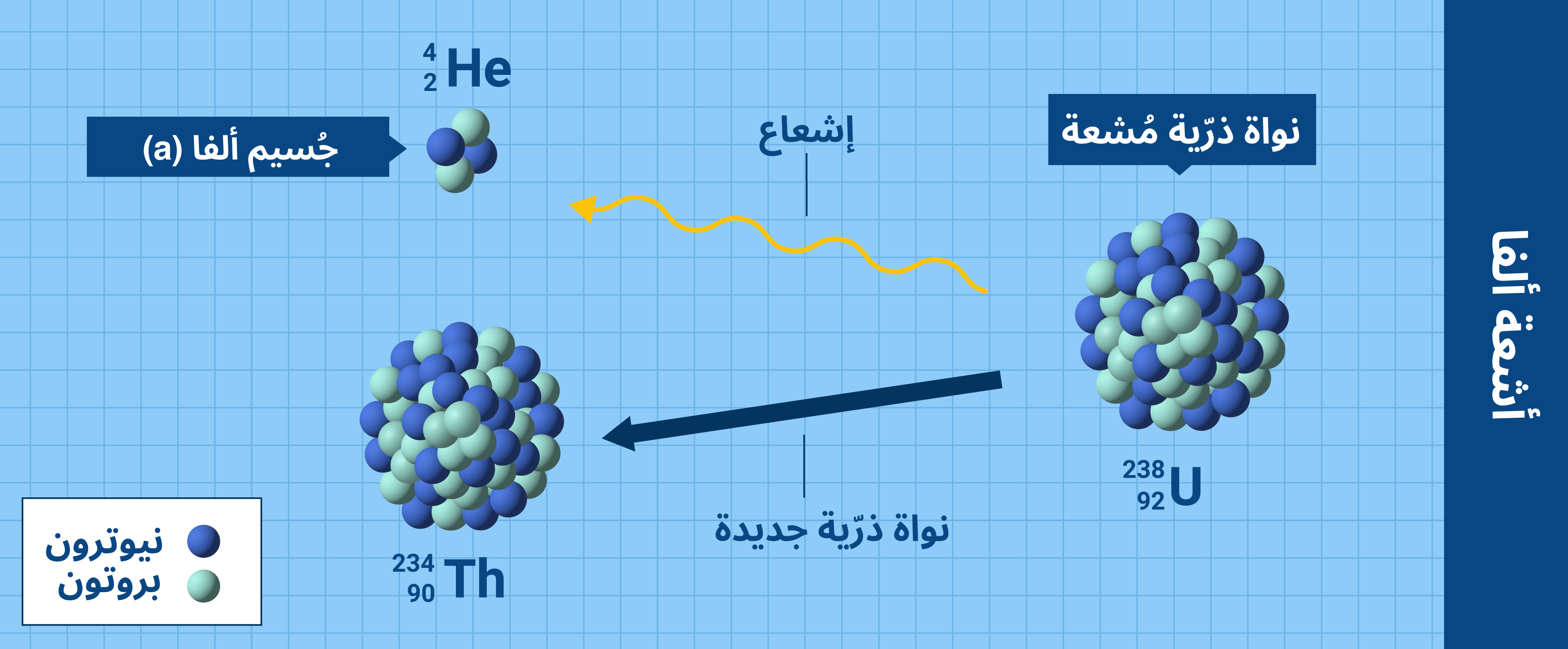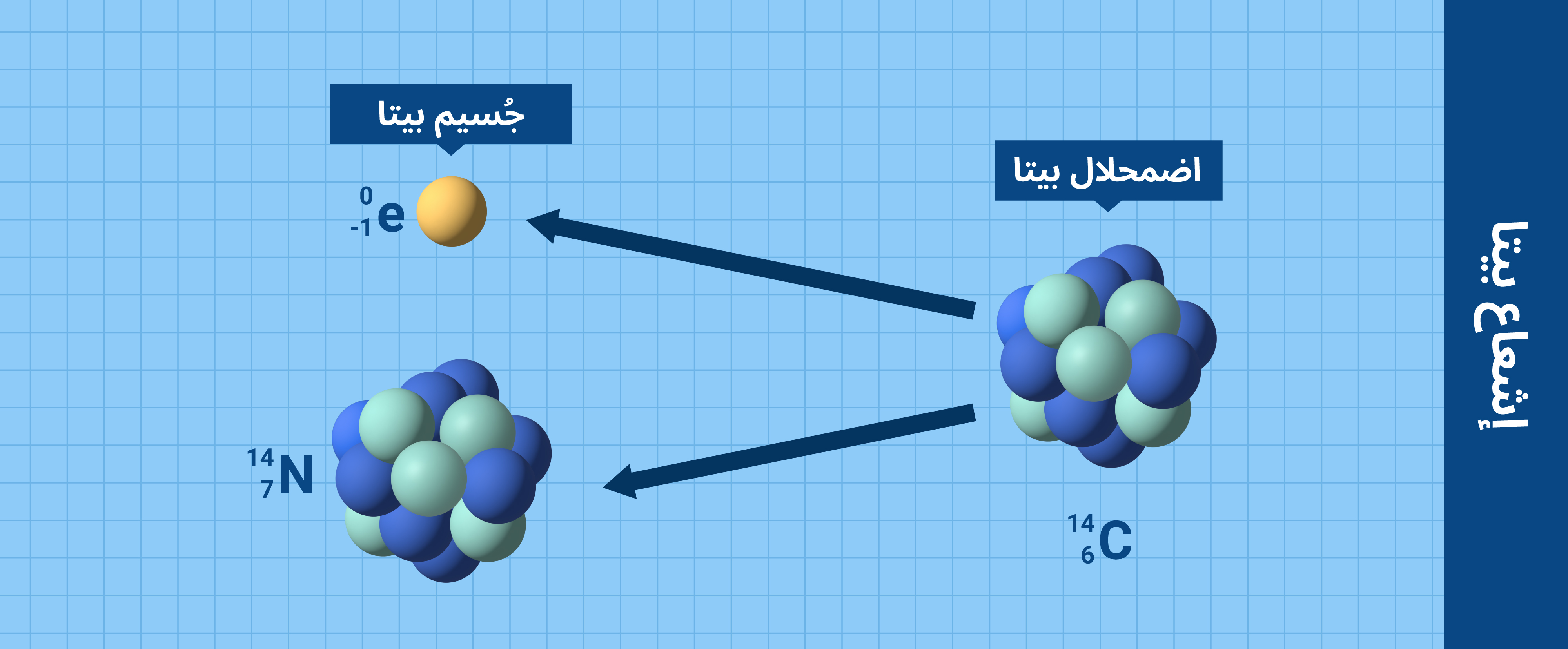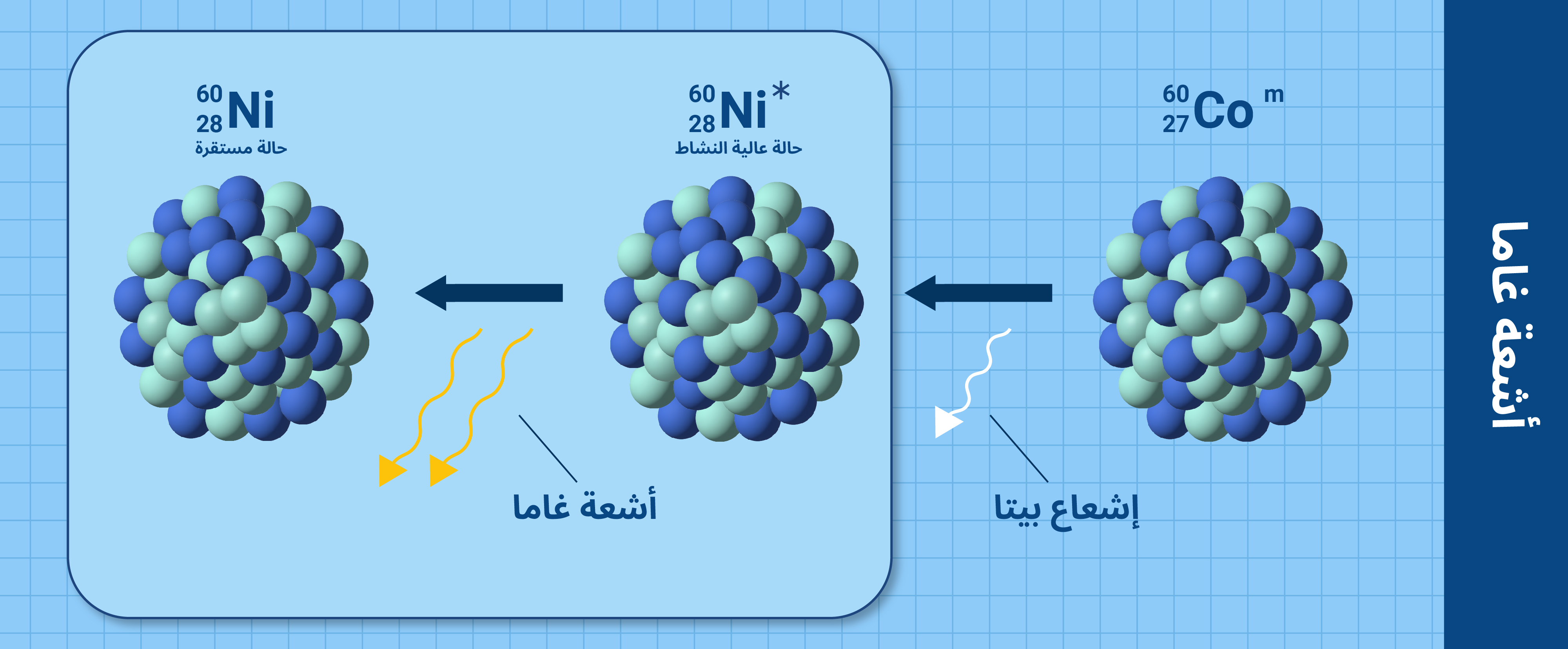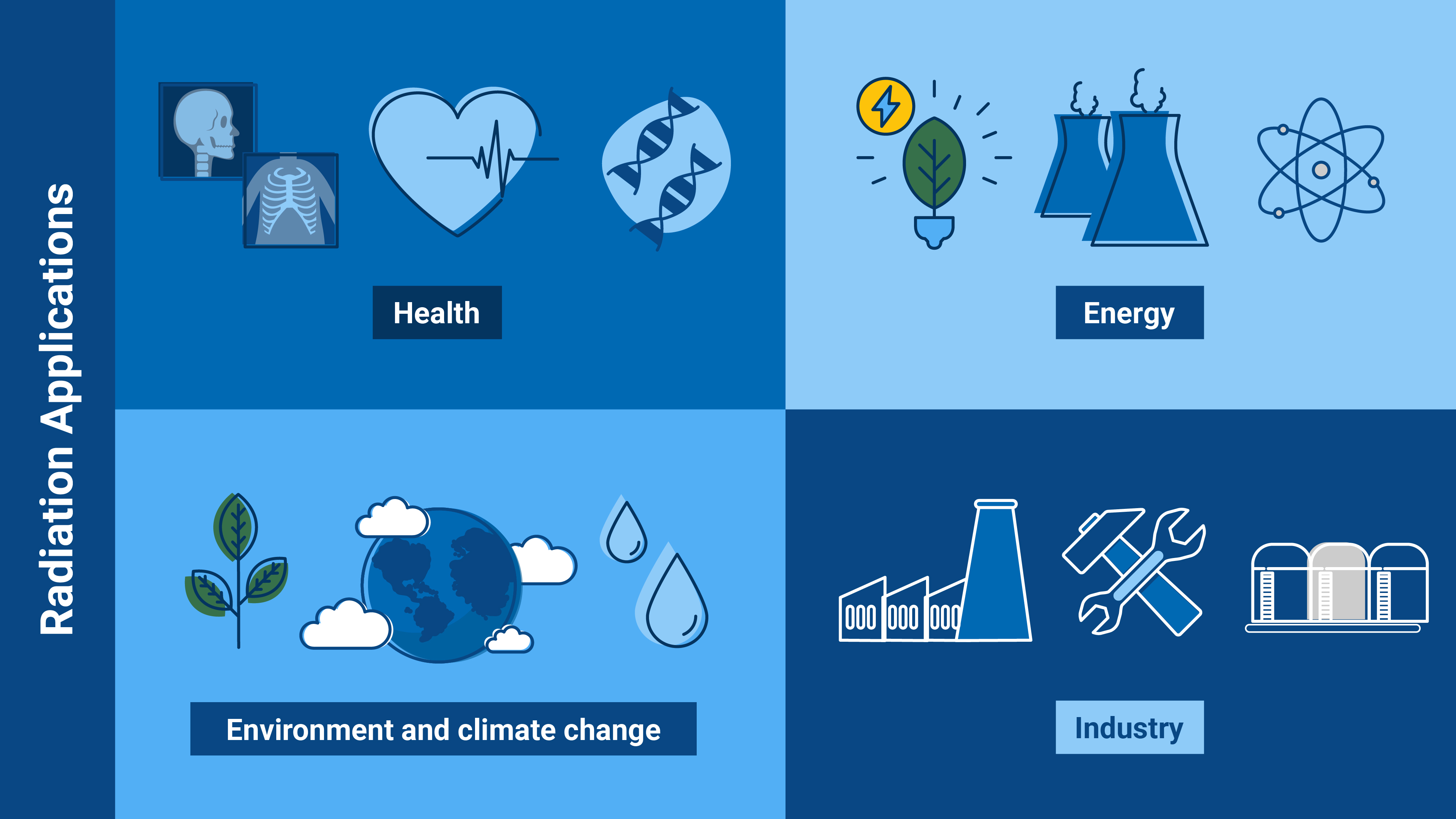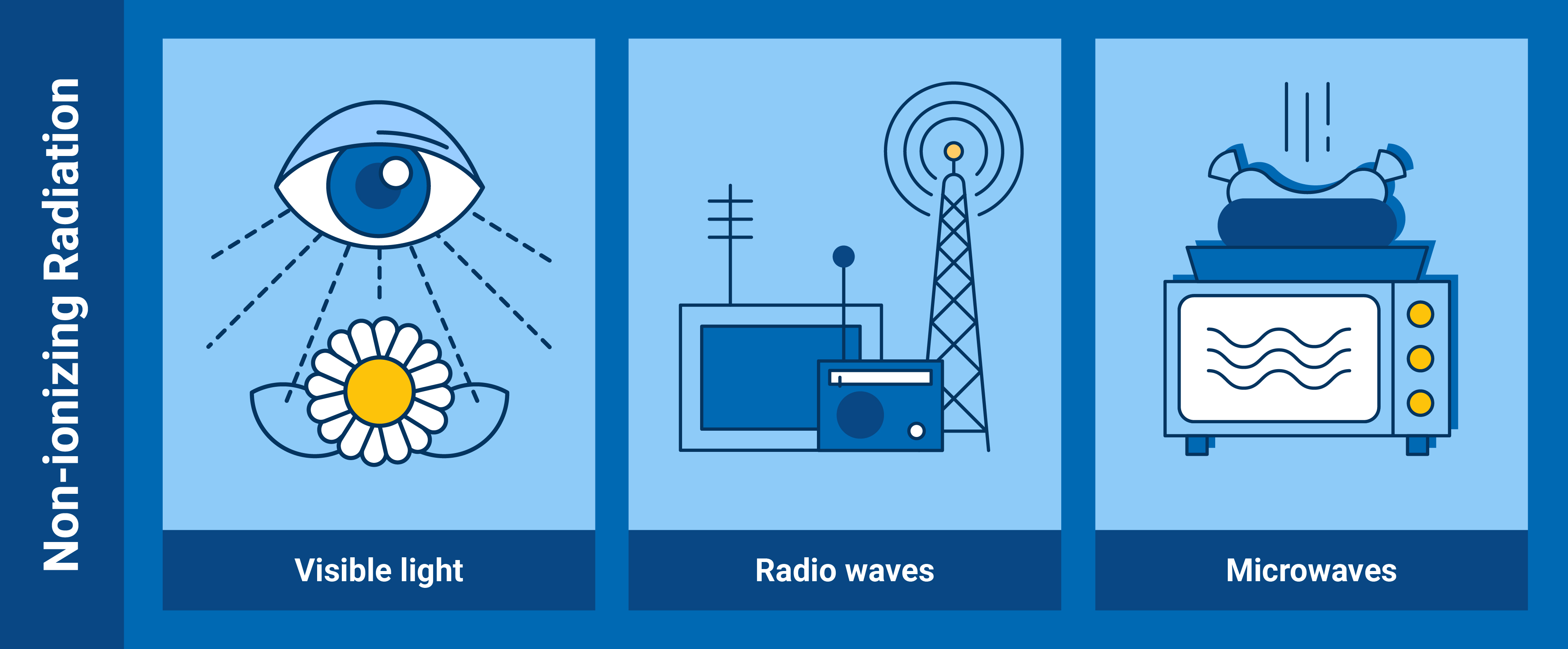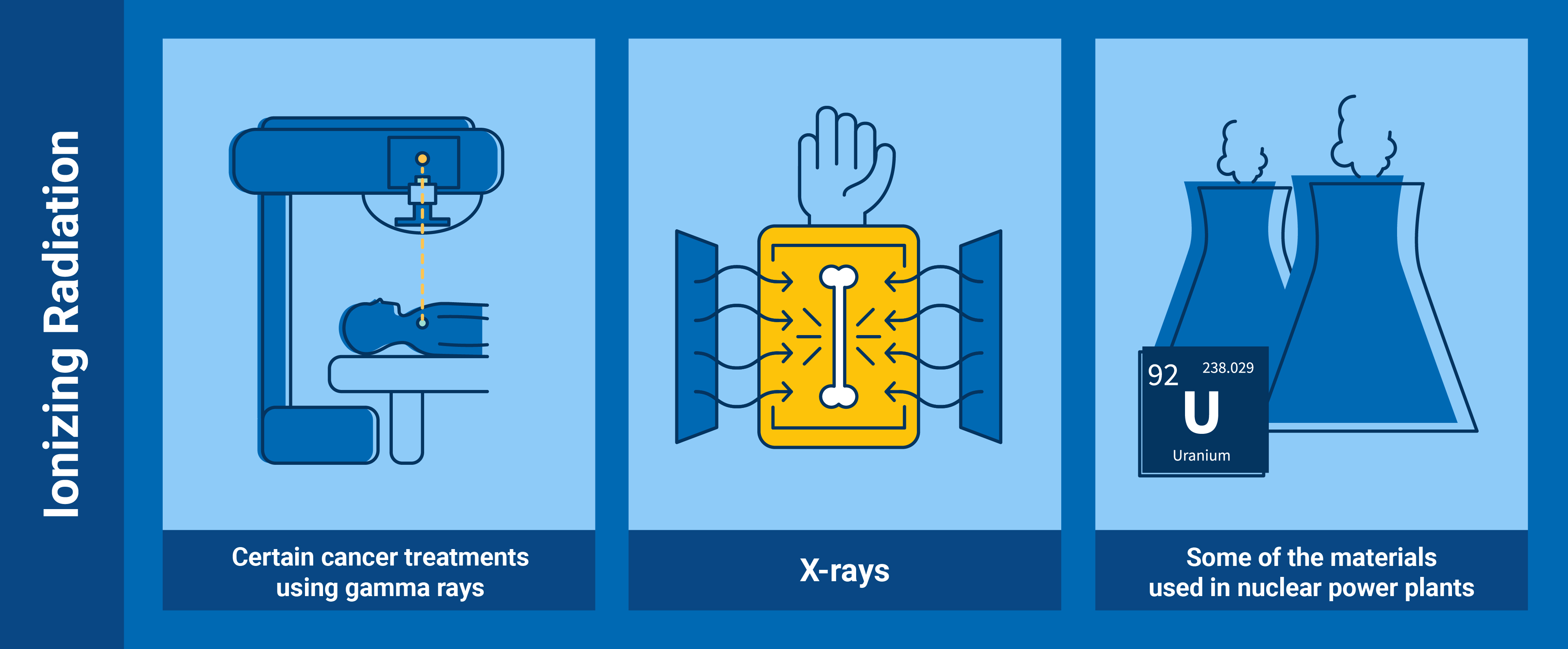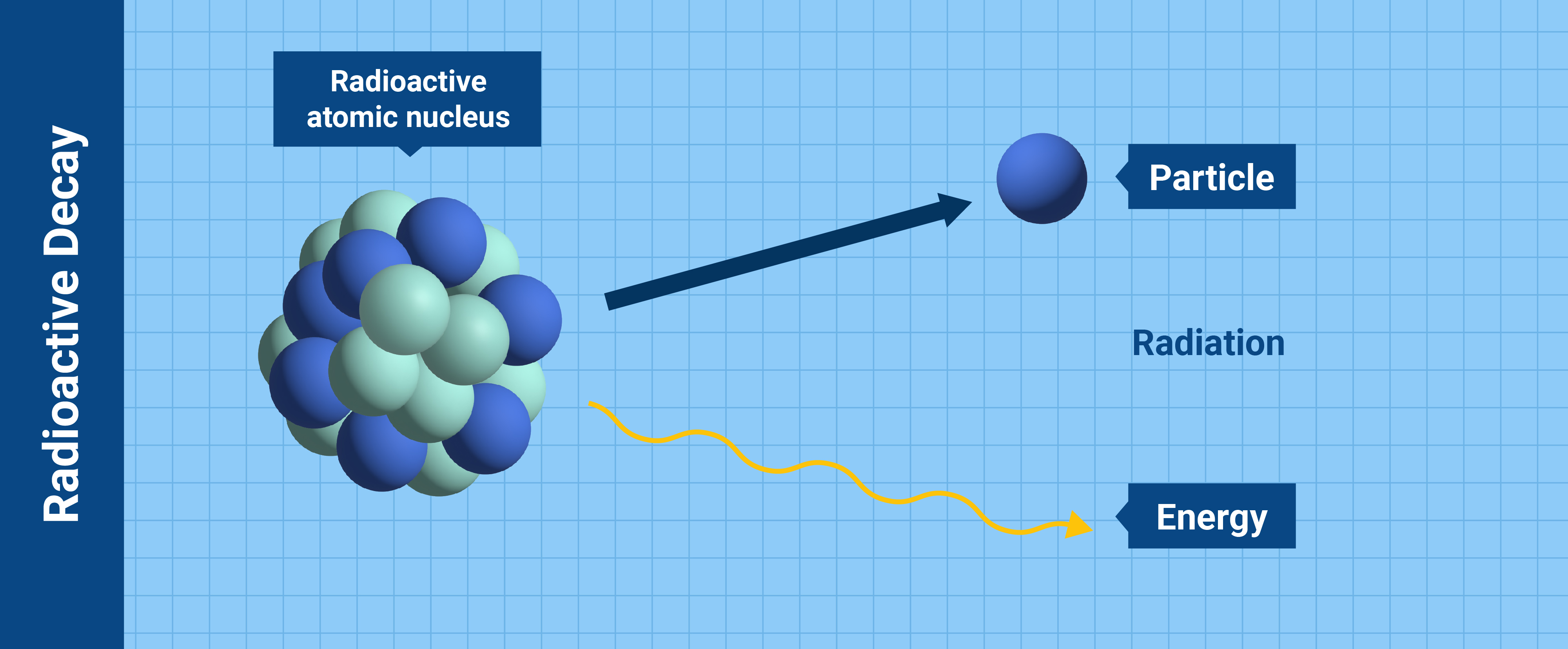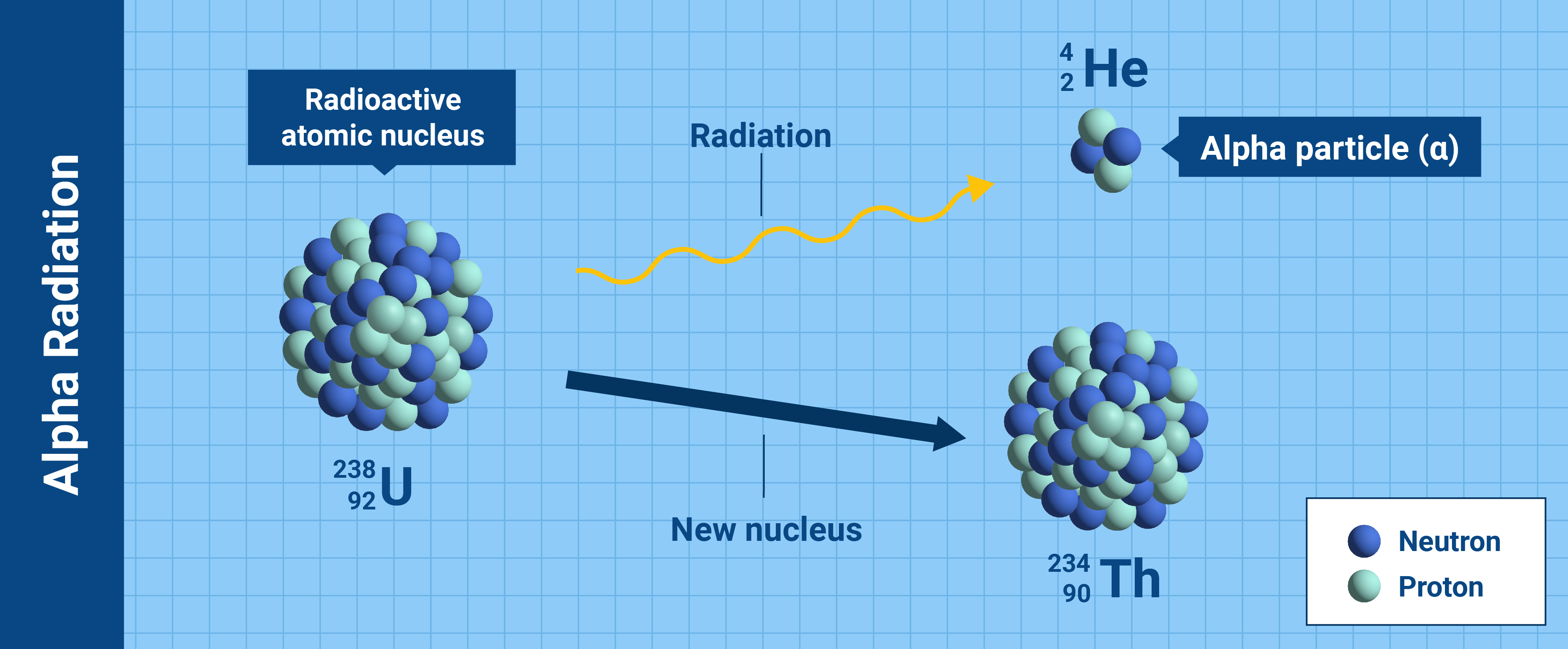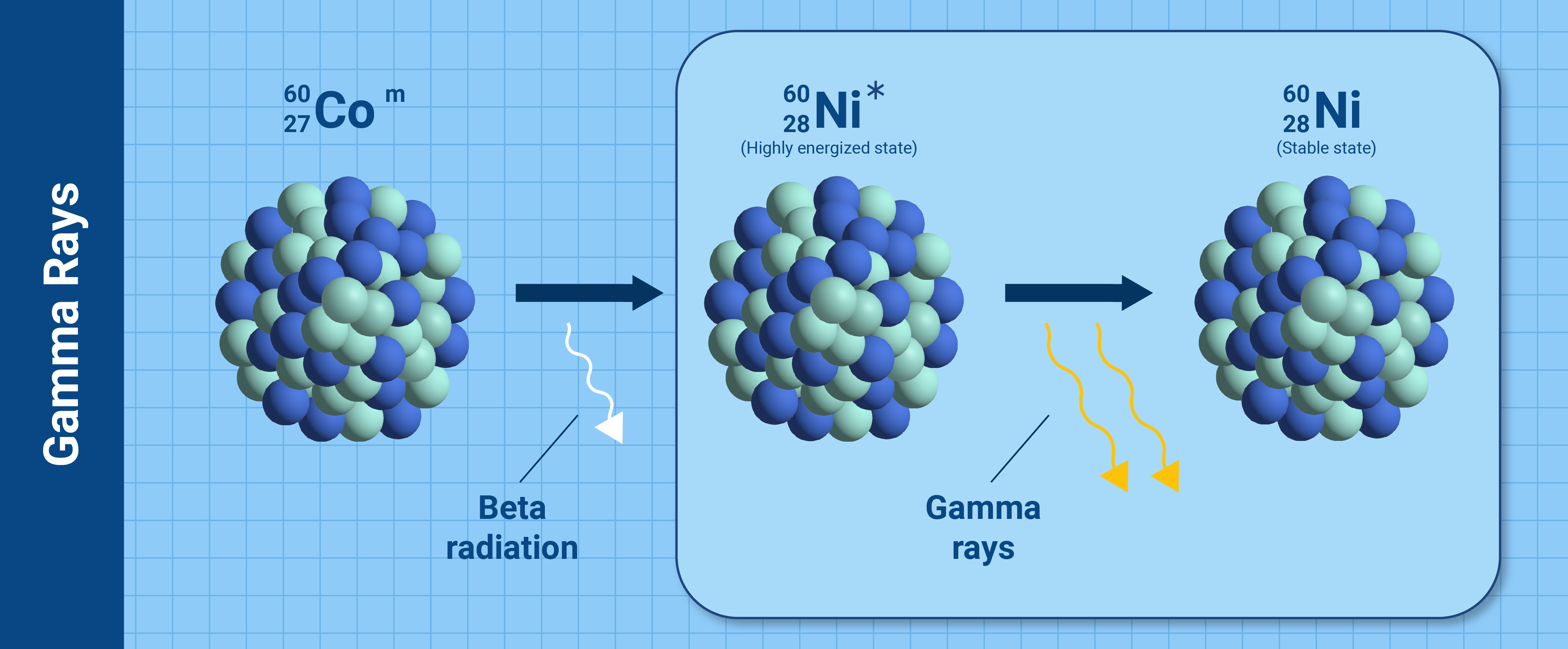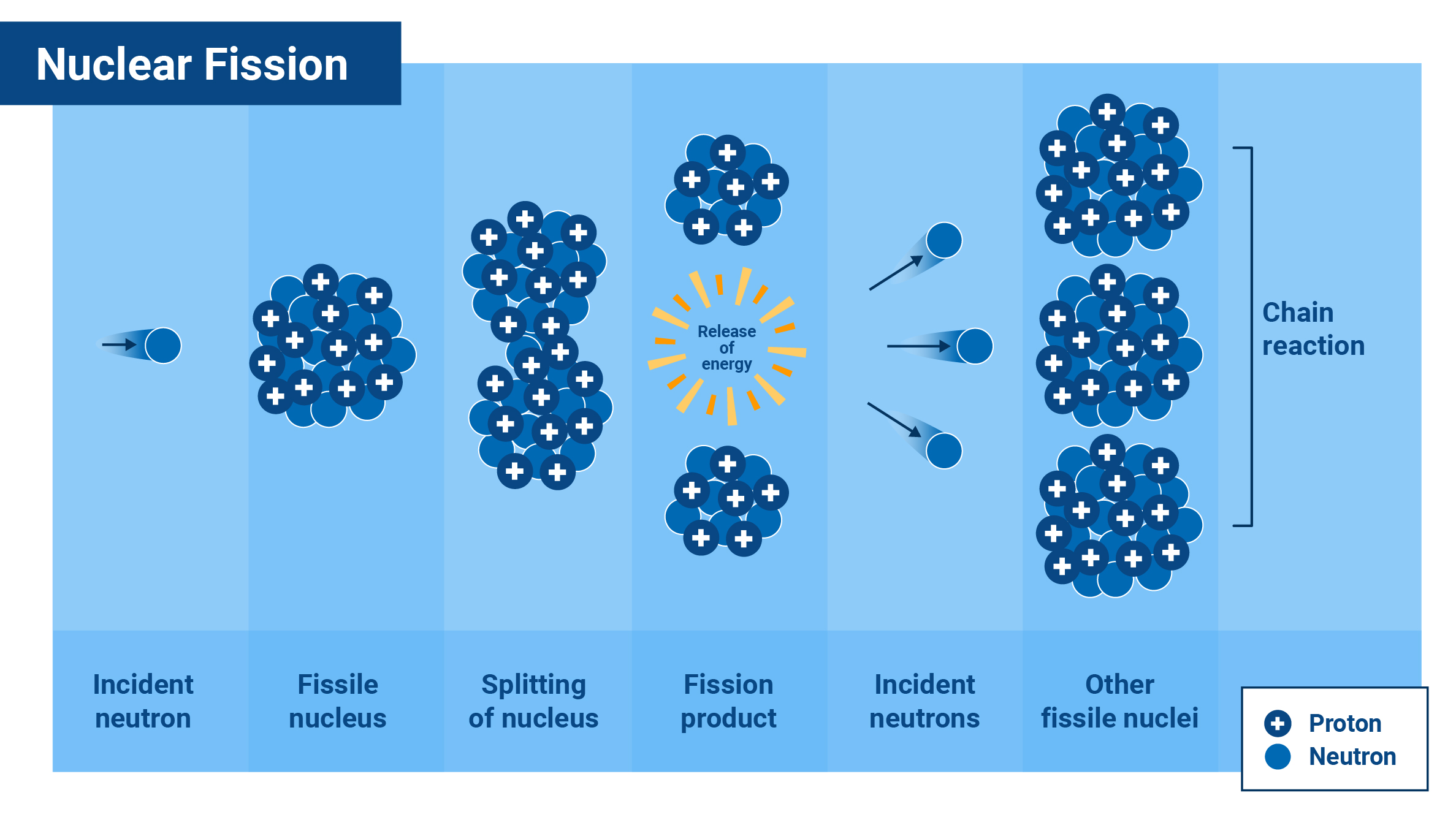الإشعاع هو الطاقة التي تنتقل من مكان إلى آخر على شكل موجات أو جُسيمات. ونحن نتعرَّض للإشعاع في حياتنا اليومية من خلال بعض مصادر الإشعاع الأكثر شيوعاً كأشعة الشمس وأفران الميكروويف في مطابخنا وأجهزة الراديو التي نستمع إليها في سياراتنا. ومعظم هذه الإشعاعات لا تُشكِّل خطراً على صحتنا. وبشكل عام، تقل مخاطر الإشعاع عند التعرُّض لجرعات منخفضة منه ولكن يمكن أن تزيد مخاطره عند التعرُّض لجرعات كبيرة. ويجب اتِّخاذ تدابير مختلفة، حسب نوع الإشعاع، للحدِّ من آثاره على الإنسان والبيئة، بما يتيح لنا الاستفادة من تطبيقاته العديدة.
ما الإشعاع؟
الإشعاع هو الطاقة التي تنتقل من مكان إلى آخر على شكل موجات أو جُسيمات. ونحن نتعرَّض للإشعاع في حياتنا اليومية من خلال بعض مصادر الإشعاع الأكثر شيوعاً كأشعة الشمس وأفران الميكروويف في مطابخنا وأجهزة الراديو التي نستمع إليها في سياراتنا. ومعظم هذه الإشعاعات لا تُشكِّل خطراً على صحتنا. وبشكل عام، تقل مخاطر الإشعاع عند التعرُّض لجرعات منخفضة منه ولكن يمكن أن تزيد مخاطره عند التعرُّض لجرعات كبيرة. ويجب اتِّخاذ تدابير مختلفة، حسب نوع الإشعاع، للحدِّ من آثاره على الإنسان والبيئة، بما يتيح لنا الاستفادة من تطبيقاته العديدة.
ما فوائد الإشعاع؟ إليكم بعض الأمثلة:
الصحة: يمكن استخدام الإشعاع في العمليات الطبية، وفي العديد من علاجات السرطان وطرق التصوير التشخيصي.
الطاقة: يسمح لنا الإشعاع بإنتاج الكهرباء عن طريق الطاقة الشمسية والطاقة النووية.
البيئة وتغيُّر المناخ: يمكن استخدام الإشعاع لمعالجة مياه الصَّرف الصحي أو لاستيلاد أصناف جديدة من النباتات القادرة على مقاومة تغيُّر المناخ.
الصناعة والعلوم: باستخدام التِّقنيات النَّووية القائمة على الإشعاع، يمكن للعلماء تفحُّص قطع قديمة أو إنتاج مواد ذات خصائص مُميَّزة كما هو الحال في مجال صناعة السَيارات.
وإذا كان الإشعاع مفيداً، فلماذا نقي أنفسنا منه؟
للإشعاع العديد من التطبيقات المفيدة ولكن كما هو الحال في كل نشاط، عندما تكون هناك مخاطر مرتبطة باستخدامه، يجب اتِّخاذ إجراءات محددة لوقاية الناس والبيئة. ويتطلب استخدام أنواع مختلفة من الإشعاع وجود تدابير وقائية مختلفة، فاستخدام "الإشعاع غير المؤيِّن" وهو ذات طاقة منخفضة له تدابير وقائية أقل من "الإشعاع المؤيِّن" ذي الطاقة الأعلى. وتضع الوكالة الدولية للطاقة الذَّرية معايير لوقاية الناس والبيئة فيما يتعلق بالاستخدام السلمي للإشعاع المؤيِّن - بما يتماشى مع رسالتها.
أنواع الإشعاع
الإشعاع غير المؤيِّن
الإشعاع غير المؤيِّن هو إشعاع ذو طاقة أقل ولا يملك الطاقة الكافية لفصل الإلكترونات عن الذرات أو الجُزيئات، سواء في المادة أو في الكائنات الحيَّة. ومع ذلك، يمكن أن تُؤدِّي الطاقة إلى اهتزاز هذه الجزيئات وبالتالي إنتاج الحرارة. وهذه هي الطريقة التي تعمل بها أفران الميكروويف مثلاً.
وبشكلٍ عام، لا يُشكِّل الإشعاع غير المؤيِّن خطراً على صحة الناس. ولكن قد يحتاج العُمَّال الذين يتعاملون بشكل منتظم ومباشر مع بعض مصادر الإشعاع غير المؤيِّن إلى تدابير خاصة لوقاية أنفسهم من الحرارة الناتِجة عن هذه الإشعاعات.
وتشمل بعض الأمثلة الأخرى للإشعاع غير المؤيِّن موجات الراديو والضوء المرئي. والضوء المرئي هو نوع من الإشعاع غير المؤيِّن الذي يمكن للعين البشرية إدراكه. وتُعدُّ موجات الراديو نوعاً من الإشعاع غير المؤيِّن ولا يمكننا رؤيتها أو إدراكها بحواسنا الأخرى، ولكن يمكن التقاط هذه الموجات عبر أجهزة الراديو التقليدية.
بعض الأمثلة على الإشعاعات غير المؤيِّنة كالضوء المرئي وموجات الراديو وأفران الميكروويف (الرسم التوضيحي من: أدريانا فارغاس/الوكالة الدولية للطاقة الذَّرية)
الإشعاع المؤيِّن
ويحمل الإشعاع المؤيِّن طاقة يمكنها فصل الإلكترونات عن الذَّرات أو الجُزيئات، مما يسبب تغيُّرات على المستوى الذّري عند التفاعل مع أي مادة بما في ذلك الكائنات الحية. وغالباً ما تُؤدي مثل هذه التَّغييرات إلى إنتاج الأيونات، وهي ذرّات أو جُزيئات مشحونة كهربائيًّا، ومن هنا جاء مصطلح الإشعاع "المؤيِّن".
ويمكن للإشعاع المؤيِّن، عند استخدامه بجُرعات عالية، أن يُؤدي إلى إتلاف الخلايا أو الأعضاء في أجسامنا بل والتَّسبب في الوفاة. وللإشعاع المؤيِّن العديد من التطبيقات المفيدة عند استخدامه بالجرعات اللازمة، حيث يُستخدَم في مجالات مثل الطب والصناعة والزراعة والبحوث. وفي حين أن تنظيم استخدام مصادر الإشعاع والوقاية من الإشعاع هما مسؤوليتان وطنيتان، تقدِّم الوكالة الدولية للطاقة الذَّرية الدعم للمشرعين والمُنظِّمين من خلال نظام شامل لمعايير الأمان الدولية بهدف وقاية العُمَّال والمرضى وكذلك أفراد الجمهور والبيئة من الآثار الضَّارة المُحتملة للإشعاع المؤيِّن.
تتضمن بعض أمثلة الإشعاع المؤيِّن بعض أنواع علاجات السرطان باستخدام أشعة غاما والأشعة السينية والإشعاع المنبعث من المواد المشعة المُستخدمة في محطات الطاقة النووية. (الرسم التوضيحي من: أدريانا فارغاس/الوكالة الدولية للطاقة الذَّرية)
الأسس التي يقوم عليها الاضمحلال الإشعاعي والإشعاعات الناتجة عن هذه العملية
يمكن أن ينشأ الإشعاع المؤيِّن، على سبيل المثال، من الذَّرات غير المستقرة (المُشعة) وهي تنتقل إلى حالة أكثر استقراراً أثناء عملية إطلاق الطاقة.
وتتَّسم معظم الذَّرات على الأرض بالاستقرار، ويعود ذلك أساساً إلى التركيب المُتوازن والمستقر للجُسيمات، أي النيوترونات والبروتونات، في مركزها (أو نواتها). ومع ذلك، في بعض أنواع الذَّرات غير المستقرة، فإن تكوين عدد البروتونات والنيوترونات في نواتها لا يسمح لها بجمع هذه الجُسيمات معاً. وتُسمى هذه الذَّرات غير المستقرة بـ "الذَّرات المشعة". وعندما تتحلل الذَّرات المُشعة، فإنها تُطلق طاقة في شكل إشعاع مؤيِّن (كجُسيمات ألفا أو جُسيمات بيتا أو أشعة غاما أو النيوترونات)، والتي يمكن أن يكون لها فوائد مختلفة عند تسخيرها واستخدامها بأمان.
ما أكثر أنواع الاضمحلال الإشعاعي شيوعاً؟ وكيف نقي أنفسنا من الآثار الضَّارة للإشعاع الناتج عن هذه العملية؟
بناءً على نوع الجُسيمات أو الموجات التي تطلقها النواة لتصبح مستقرة، هناك أنواع مختلفة من الاضمحلال الإشعاعي الذي يؤدي إلى إشعاع مؤيِّن. والأنواع الأكثر شيوعاً هي جُسيمات ألفا وجُسيمات بيتا وأشعة غاما والنيوترونات.
إشعاع ألفا
وخلال عملية إشعاع ألفا، تُطلق النوى المُتحللة جُسيمات ثقيلة موجبة الشحنة لتصبح أكثر استقراراً. ولا تستطيع هذه الجسيمات اختراق بشرتنا لإحداث أي ضررٍ وغالباً ما يمكن أن توقف ورقة واحدة اختراق هذه الأشعة.
ومع ذلك، إذا أُدخِلَت المواد التي تُطلِق أشعة ألفا إلى الجسم عن طريق التنفس أو الأكل أو الشرب، فيمكن أن تُعرِّض الأنسجة الداخلية مباشرة لهذه الأشعة وبالتالي قد تلحق ضرراً بالصحة.
الأمريسيوم -241 هو أحد الذَّرات التي تتحلل عبر جُسيمات ألفا، ويُستخدم في أجهزة كشف الدخان في جميع أنحاء العالم.
اضمحلال ألفا (الرسم التوضيحي من: أدريانا فارغاس/الوكالة الدولية للطاقة الذرية)
إشعاع بيتا
خلال عملية إشعاع بيتا، تُطلق النوى جسيمات أصغر تُدعى إلكترونات تكون أكثر اختراقاً من جُسيمات ألفا ويمكن أن تمُرَّ عبر سنتيمتر أو سنتيمترين من الماء، حسب طاقتها. وبشكلٍ عام، يمكن أن توقف ورقة الألمنيوم التي يبلغ سمكها بضعة مليمترات أشعة بيتا.
وتحمل بعض الذَّرات غير المُستقرة، التي ينبعث منها إشعاع بيتا، الهيدروجين-3 (التريتيوم) والكربون-14. ويُستخدم التريتيوم، مع عناصر أخرى، في مصابيح الطوارئ لتحديد المخارج في الظلام. وذلك لأن إشعاع بيتا الذي يطلقه التريتيوم يُسبِّب توهُّج مادة الفوسفور عندما تتفاعل الإشعاعات مع بعضها بعضاً، دون تيار كهربائي. ويُستخدم الكربون-14 لتحديد تاريخ مواد قديمة.
اضمحلال بيتا (الرسم التوضيحي من: أدريانا فارغاس/الوكالة الدولية للطاقة الذرية)
إشعاع غاما
أشعة غاما هي أشعة كهرومغناطيسية تشبه الأشعة السِّينية وتُستخدم في مجالات عديدة مثل علاج السرطان. وتمرُّ بعض أشعة غاما مباشرة عبر جسم الإنسان دون أن تُسبب أيّ أذى، بينما يمتص الجسم البعض الآخر مُلحقاً به الأذى. ويُمكن التخفيف من حدة أشعة غاما لتصل إلى مستويات قليلة المخاطر باستخدام جدران سميكة مصنوعة من الخرسانة أو الرصاص. ولذلك، تكون جدران غرف العلاج الإشعاعي في المستشفيات المخصصة لمرضى السرطان سميكة.
يُستخدم الكوبالت 60 في علاج السرطان لقدرته على إنتاج أشعة غاما التي يمكن استخدامها لمكافحة الأورام. وترد في الشكل أعلاه آلية مبسطة لهذه العملية. في البداية، ينبعث إشعاع بيتا من نواة الكوبالت 60، مما يؤدي إلى التحول إلى النيكل 60 في حالة عالية النشاط (Ni-60*). وسرعان ما تفقد هذه الحالة الطاقة عن طريق انبعاث شعاعَي غاما مما يؤدي إلى استقرار النيكل -60. (الرسم المعلوماتي : أ. فارغاس / الوكالة الدولية للطاقة الذرية).
النيوترونات
النيوترونات عبارة عن جسيمات ضخمة نسبياً وهي أحد المكونات الأساسية للنواة. وهي غير مشحونة وبالتالي لا تتسبب في التأيُّن مباشرةً. ولكنَّ تفاعُلها مع ذرات المادة يمكن أن يُؤدي إلى ظهور أشعة ألفا أو بيتا أو غاما أو الأشعة السينية، مما يؤدي بعد ذلك إلى التأيُّن. ويمكن للنيوترونات الانتقال ولا يمكن إيقافها إلا من خلال كتل سميكة من الخرسانة أو الماء أو البارافين.
ويمكن إنتاج النيوترونات بطرقٍ عديدة، عبر التفاعلات النَّووية أو في المفاعلات النَّووية التي تبدأ بواسطة الجُسيمات العالية الطاقة في الأشعة المعجَّلة. ويمكن اعتبار النيوترونات مصدراً مهماً للإشعاع المؤيِّن غير المباشر.
الانشطار النووي داخل مفاعل نووي هو مثال على سلسلة تفاعل إشعاعي تحملها النيوترونات (الرسم التوضيحي من: أدريانا فارغاس/الوكالة الدولية للطاقة الذَّرية)
من المسؤول عن ضمان الاستخدام المأمون والآمن للإشعاع في العالم العربي؟
معظم دول المنطقة لديها سلطات وطنيَّة مسؤولة عن ضمان الاستخدام المأمون والآمن للإشعاع المُؤيِّن والتِكنولوجيات النَّووية. وتجدر الإشارة هنا إلى أنَّ العديد من الدول العربية هي أعضاء في مبادرة ArabSafe، التي تجمع السُلطات الوطنية المسؤولة عن الإشعاع في العالم العربي لتحقيق ثقافة السلامة الإشعاعية ولضمان الاستخدام المناسب للإشعاع في المجال الطبي.
ما دور الوكالة؟
تساعد الوكالة الدولية للطاقة الذَّرية دولها الأعضاء على استخدام التِكنولوجيا النَّووية، بما في ذلك استخدام الإشعاع في مجالات الصحة والزراعة وحماية البيئة وإدارة المياه والطاقة والصناعة. وللقيام بذلك، تساعد الوكالة في البحوث المتعلقة بالاستخدام العملي للإشعاع والمصادر المشعة وتطويره، وفي تنسيق أنشطة البحث وتنفيذ المشاريع في البلدان حول العالم.
وتُشرف الوكالة، من خلال أنشطة التحقُّق وغيرها من أنشطة الضمانات، على عدم استخدام المواد القادرة على إنتاج الإشعاع إلاّ في الاستخدامات السِّلمية.
وأخيراً، تضع الوكالة معايير الأمان وإرشادات الأمن النووي وتُقدِّم تقريراً عن أفضل المُمارسات لوقاية الناس والمجتمع والبيئة من الآثار الضَّارة للإشعاع المؤيِّن.
What is radiation good for? – Some examples
- Health: thanks to radiation, we can benefit from medical procedures, such as many cancer treatments, and diagnostic imaging methods.
- Energy: radiation allows us to produce electricity via, for example, solar energy and nuclear energy.
- Environment and climate change: radiation can be used to treat wastewater or to create new plant varieties that are resistant to climate change.
- Industry and science: with nuclear techniques based on radiation, scientists can examine objects from the past or produce materials with superior characteristics in, for instance, the car industry.
If radiation is beneficial, why should we protect ourselves from it?
Radiation has many beneficial applications but, as in every activity, when there are risks associated with its use specific actions need to be put in place to protect the people and the environment. Different types of radiation require different protective measures: a low energy form, called “non-ionizing radiation”, may require fewer protective measures than the higher energy “ionizing radiation”. The IAEA establishes standards for protection of the people and the environment in relation to the peaceful use of ionizing radiation – in line with its mandate.
Types of radiation
Non-ionizing radiation
Non-ionizing radiation is lower energy radiation that is not energetic enough to detach electrons from atoms or molecules, whether in matter or living organisms. However, its energy can make those molecules vibrate and so produce heat. This is, for instance, how microwave ovens work.
For most people, non-ionizing radiation does not pose a risk to their health. However, workers that are in regular contact with some sources of non-ionizing radiation may need special measures to protect themselves from, for example, the heat produced.
Some other examples of non-ionizing radiation include the radio waves and visible light. The visible light is a type of non-ionizing radiation that the human eye can perceive. And the radio waves are a type of non-ionizing radiation that is invisible to our eyes and other senses, but that can be decoded by traditional radios.
Some examples of non-ionizing radiation are the visible light, the radio waves, and the microwaves (Infographic: Adriana Vargas/IAEA)
Ionizing radiation
Ionizing radiation is a type of radiation of such energy that it can detach electrons from atoms or molecules, which causes changes at the atomic level when interacting with matter including living organisms. Such changes usually involve the production of ions (electrically charged atoms or molecules) – hence the term “ionizing” radiation.
In high doses, ionizing radiation can damage cells or organs in our bodies or even cause death. In the correct uses and doses and with the necessary protective measures, this kind of radiation has many beneficial uses, such as in energy production, in industry, in research and in medical diagnostics and treatment of various diseases, such as cancer. While regulation of use of sources of radiation and radiation protection are national responsibility, the IAEA provides support to lawmakers and regulators through a comprehensive system of international safety standards aiming to protect workers and patients as well as members of the public and the environment from the potential harmful effects of ionizing radiation.
Some examples of ionizing radiation include some types of cancer treatments using gamma rays, the X-rays, and the radiation emitted from radioactive materials used in nuclear power plants (Infographic: Adriana Vargas/IAEA)
The science behind radioactive decay and the resulting radiation
Ionizing radiation can originate from, for example, unstable (radioactive) atoms as they are transitioning into a more stable state while releasing energy.
Most atoms on Earth are stable, mainly thanks to an equilibrated and stable composition of particles (neutrons and protons) in their centre (or nucleus). However, in some types of unstable atoms, the composition of the number of protons and neutrons in their nucleus does not allow them to hold those particles together. Such unstable atoms are called “radioactive atoms”. When radioactive atoms decay, they release energy in the form of ionizing radiation (for example alpha particles, beta particles, gamma rays or neutrons), which, when safely harnessed and used, can produce various benefits.
What are the most common types of radioactive decay? How can we protect ourselves against the harmful effects of the resulting radiation?
Depending on the type of particles or waves that the nucleus releases to become stable, there are various kinds of radioactive decay leading to ionizing radiation. The most common types are alpha particles, beta particles, gamma rays and neutrons.
Alpha radiation
In alpha radiation, the decaying nuclei release heavy, positively charged particles in order to become more stable. These particles cannot penetrate our skin to cause harm and can often be stopped by using even a single sheet of paper.
However, if alpha-emitting materials are taken into the body by breathing, eating, or drinking, they can expose internal tissues directly and may, therefore, damage health.
Americium-241 is an example of an atom that decays via alpha particles, and it is used in smoke detectors across the world.
Alpha decay (Infographic: A. Vargas/IAEA).
Beta radiation
In beta radiation, the nuclei release smaller particles (electrons) that are more penetrating than alpha particles and can pass through e.g., 1-2 centimetres of water, depending on their energy. In general, a sheet of aluminium a few millimetres thick can stop beta radiation.
Some of the unstable atoms that emit beta radiation include hydrogen-3 (tritium) and carbon-14. Tritium is used, among others, in emergency lights to for instance mark exits in the dark. This is because the beta radiation from tritium cause phosphor material to glow when the radiation interacts, without electricity. Carbon-14 is used to, for example, date objects from the past.
Beta decay (Infographic: A. Vargas/IAEA).
Gamma rays
Gamma rays, which have various applications, such as cancer treatment, are electromagnetic radiation, similar to X-rays. Some gamma rays pass right through the human body without causing harm, while others are absorbed by the body and may cause damage. The intensity of gamma rays can be reduced to levels that pose less risk by thick walls of concrete or lead. This is why the walls of radiotherapy treatment rooms in hospitals for cancer patients are so thick.
Cobalt-60 is used in cancer treatments because of its ability to produce gamma rays, which can be used to combat tumours. A simplified mechanism is given in the figure above. At first, beta radiation is emitted from the cobalt-60 nucleus, resulting in a transformation to nickel-60 in a highly energized state (*Ni-60). This state quickly loses energy by emitting two gamma rays resulting in stable nickel-60. (Infographic: A. Vargas/IAEA).
Neutrons
Neutrons are relatively massive particles that are one of the primary constituents of the nucleus. They are uncharged and therefore do not produce ionization directly. But their interaction with the atoms of matter can give rise to alpha-, beta-, gamma- or X-rays, which then result in ionization. Neutrons are penetrating and can be stopped only by thick masses of concrete, water or paraffin.
Neutrons can be produced in a number of ways, for example in nuclear reactors or in nuclear reactions initiated by high-energy particles in accelerator beams. Neutrons can represent a significant source of indirectly ionizing radiation.
Nuclear fission inside a nuclear reactor is an example of a radioactive chain reaction sustained by neutrons (Graphic: A. Vargas/IAEA).
What is the role of the IAEA?
- The IAEA assists its Member States in the use of nuclear technologies, including the use of radiation, for health, agriculture, environmental protection, water management, energy, and industry. To do so, the IAEA assists in the research and development of the practical use of radiation and radioactive sources, and coordinates research activities and implements projects in countries around the world.
- Through its safeguards and verification activities, the IAEA oversees that materials capable of producing radiation are not diverted from peaceful uses.
- Finally, the IAEA develops safety standards and security guidance and report on best practices for the protection of people, society and the environment from the harmful effects of ionizing radiation.
This article was first published on iaea.org on 3 March 2022.
